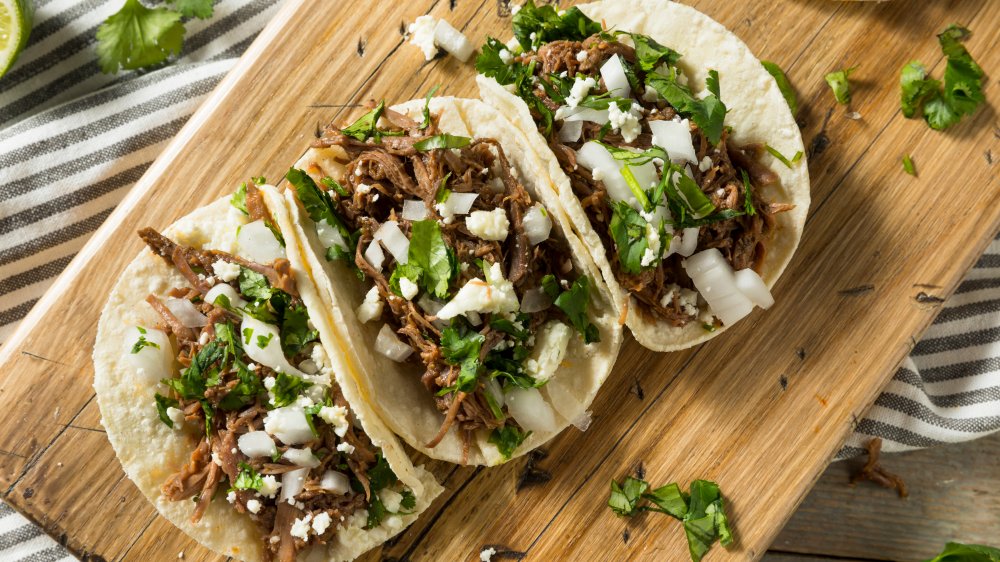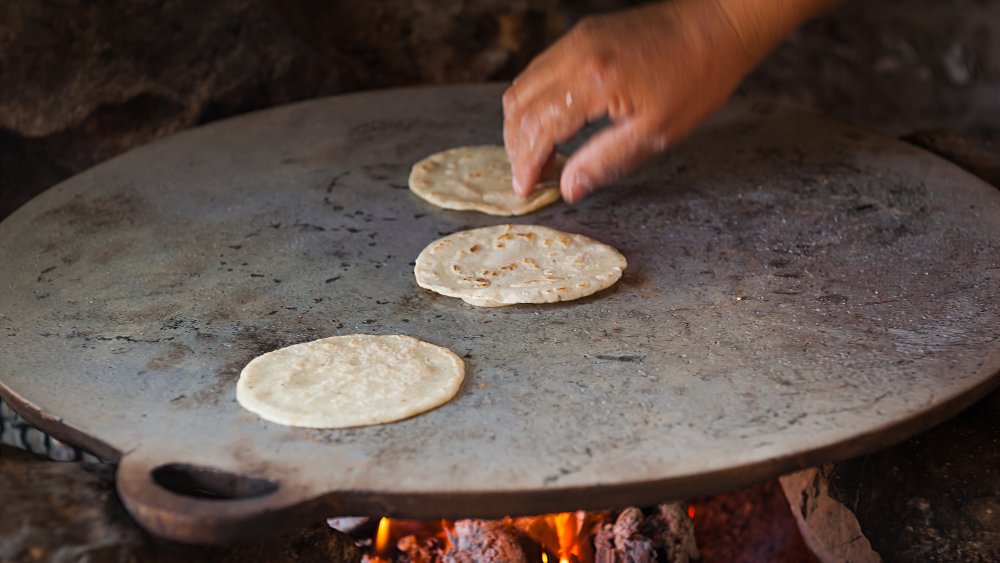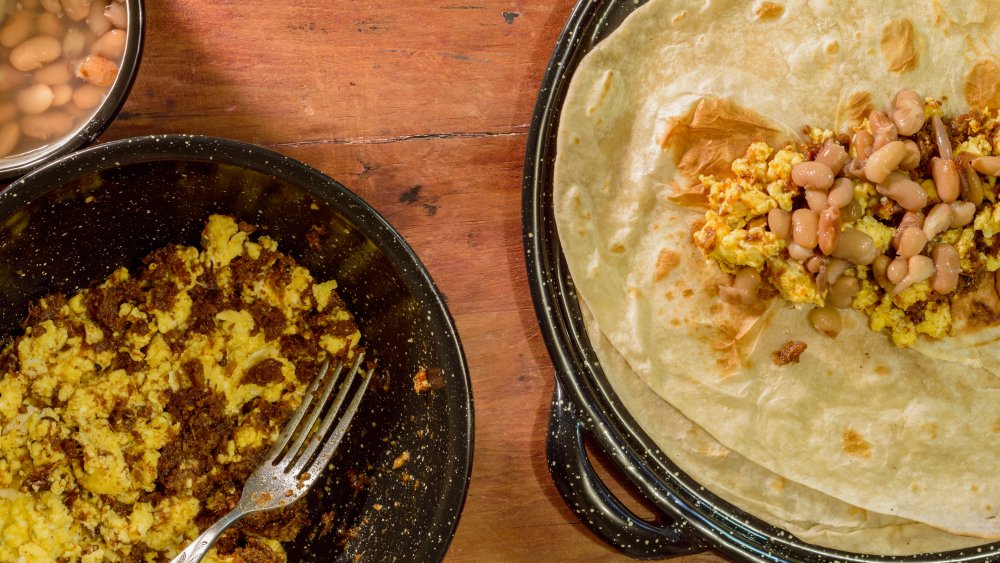The Untold Truth Of The Flour Tortilla
You've ordered your tacos — after a 10-minute internal debate between carnitas and al pastor — and the question hits you. Flour or corn?
For a moment, you're blindsided. Corn is more authentic, right? It's been traced back to the Aztec and Mayan empires, at the very least, and some estimates say the corn tortilla was conceived as early as 10,000 B.C.E. (via Authentic Recipes).
And where does the flour tortilla come from anyway? After all, you've only seen it packed into little plastic bags at the supermarket. The flour tortilla certainly doesn't deserve much attention, especially when compared to its corn counterpart, which fed two ancient empires, right?
Gustavo Arellano begs to differ. The California-based food writer points out that flour tortillas have an authentic heritage of their own. When crafted correctly, the flour tortilla is supple, soft, and delicate. And, they're not just present in the United States: in the northern Mexican state of Sonora, they're basically a lifestyle (via The New Yorker).
How it (possibly) began
The flour tortilla's history is undeniably younger than that of its corn-based cousin. It most likely surfaced in the dry desert lands of Northern Mexico around the 1500s or 1600s. Sure, that's peanuts when you compare it to the possibly 12,000-year-old corn tortilla. But the possible reasons behind the flour tortilla's conception are wildly unexpected: our soft, floury friend may have Jewish, Muslim, and Catholic roots.
According to Arellano (via The Splendid Table), "Depending on the decade, sometimes people say it's a Jewish influence. Sometimes people say it's a Moorish influence." While the origin story of the flour tortilla is pretty cloudy, we do know that many Spanish Jews migrated to the northern rim of Mexico while attempting to flee the Spanish Inquisition. We also know that Spanish cuisine, especially back in the 16th century, held a strong Moorish influence (via Food 52). Some historians, including those of the Tohono O'odham Nation in Southern Arizona, credit the Italian-Jesuit missionary Eusebio Kino as the man who brought wheat to the region (via The Tohono O'odham Nation).
A gift from the border region
While the history of the flour tortilla spans far and wide, one thing is clear: it's a regional staple in northern Mexico, and in southwestern states like Arizona, New Mexico, Texas, and California. And let's not forget — those states, not too long ago, were Mexico itself (via San Antonio Express-News).
These days, a walk through a Sonoran taquería or tortillería can be a pretty magical testament to this history. The mega-talented artisans who craft flour tortillas combine flour, salt, water, and lard. (You read that right. These are not vegetarian-friendly, and we're not mad about it.) The tortilla-makers often stretch the dough and lay it, bare-handed, onto a hot comal (via L.A. Taco). The result? A see-through, tender tortilla so large that it's known as a sobaquera: it can possibly stretch from your hand to your armpit.
Making a sobaquera, or any flour tortilla, can be a challenge in itself. The quality of flour can actually vary, depending on the climate in which it's raised. That's why the creators of Sonoratown, a flour tortilla hotspot in Los Angeles, actually used to drive to Mexico every couple weeks to pick up Sonoran flour (via The New York Times).
The flour tortilla is no joke. It's historical, multicultural, and the perfect vehicle for quesadillas, carne asada-stuffed burritos, and cheese crisps — an Arizona comfort food with melted cheese, green chile, and a warm, toasted flour tortilla (via Simply Recipes).


